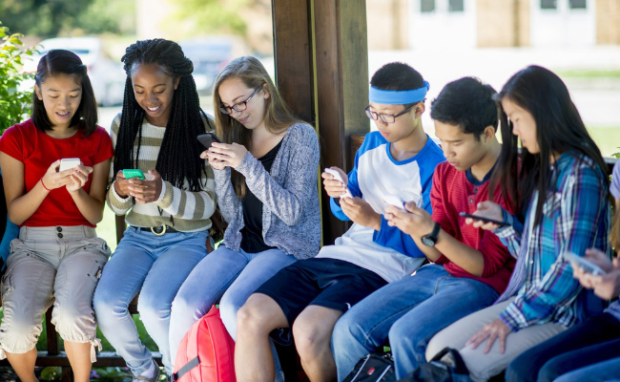Why Green iMessage Bubbles Are A No-No For US Teens
Apple has captivated Gen Z in the United States so thoroughly that younger users feel peer pressure for not having an iPhone.
Generation Z are people born after 1996. They comprise 34% of iPhone users in the country, per new data from advertising tech data platform Attain.
Sending messages from Android phones to iPhones turns their text bubbles green. As a result, the latter group often ostracizes young Android users.
Why are iMessage bubble colors so important for US teens?
How Apple’s iMessage sealed its dominance with an army of texting teens. https://t.co/VW9ZA8LU3w
— The Wall Street Journal (@WSJ) January 8, 2022
We would need to discuss how messaging between Android and iOS users works before explaining iMessage’s social impact.
Apple phones have a built-in messaging app called iMessage. However, it is part of the company’s closed ecosystem of products and services.
In other words, iMessage is convenient for conversing with fellow Apple users, but it becomes a hassle once an Android user communicates with them.
What happens when an Android user sends a text to an iOS user? The iMessage app defaults to the SMS standard, making its photos and videos smaller and glitchier.
More importantly, iMessage turns outbound messages green instead of blue, letting iPhone users know they received an Android message.
A 2021 survey from the investment bank Piper Sandler found 87% of teens own an iPhone. As a result, a majority of young people in the United States use one.
A child’s teenage years usually involve a lot of peer pressure, as it is the period when they discover their identity by interacting with other people.
It marks the fifth stage in psychologist Erik Erikson’s Stages of Psychosocial Development, Identity vs. Role Confusion.
Nowadays, most people use smartphones in their daily lives. Consequently, young people rely on smartphones to communicate with one another.
Combine these factors, and you begin to understand why US teens care so much about iMessage text colors.
Having green text bubbles make it harder for other kids to hang out with them.
How do US teens feel when using Android among their peers?

Photo Credit: www.mghclaycenter.org
Michigan student Adele Lowitz told in a Wall Street Journal report about her experience with sending messages via Android.
It caused someone in her group chat to ask, “Who’s green?” Also, she discovered group chats weren’t working as smoothly compared to when she was using an iPhone.
“In my circle at college, and in high school rolling over into college, most people have iPhones and utilize a lot of those kinds of iPhone-specific features,” said Lowtiz.
As a result, she concluded that there was “some kind of pressure to get back to that.”
Also, University of Florida student Miles Franklin claimed he missed out on a high school game because he was an avid Android user.
In 2020, he switched to iPhone to make TikTok videos. Moreover, New York student Jocelyn Maher said her friends mocked her when her potential suiter used Android.
“I was like, Oh my gosh, his texts are green,’ and my sister literally went Ew, that’s gross,'” Maher recalled.
Grace Fang of Wellesley College in Massachusetts noted Android users apologized when their devices did not work in iMessage.
“I don’t know if it’s Apple propaganda or just like a tribal in-group versus out-group thing going on, but people don’t seem to like green text bubbles that much and seem to have this visceral negative reaction to it,” she said.
Related Articles
Conclusion
Apple seems to have influenced how US teens socialize by making it hard for Android users to interact with iPhone users.
Young people join the closed Apple community to avoid having a green iMessage text bubble. This phenomenon is one example of how technology impacts a major aspect of daily life.
How should you respond to these radical changes? Start by staying up-to-date with the latest digital trends by following Inquirer Tech.